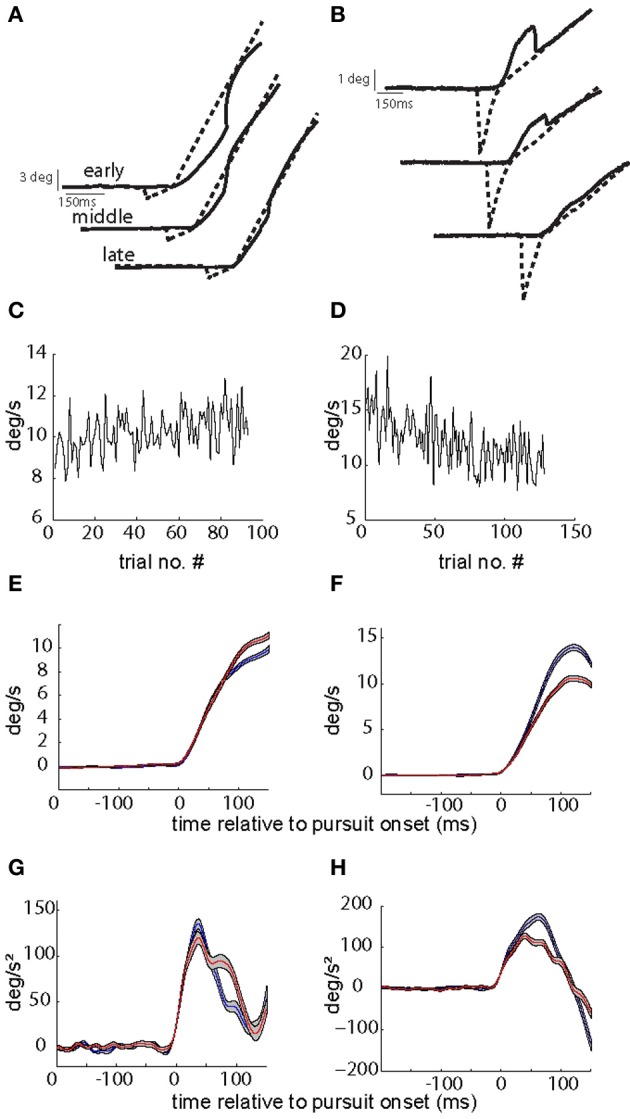Figure 1.

Kinematic changes associated with gain-increase (A,C,E,G) and gain-decrease SPA (B,D,F,H). (A,B) Show exemplary target and eye position traces from early, middle, and late in the session during gain-increase SPA (A) and gain-increase SPA (B). (C,D) Plot peak eye velocity (in the first 150 ms after SPEM onset) as function of trial number during the course of SPA. Peak velocity increases during the course of gain-increase SPA (C) and decreases during gain-decrease SPA (D). (E,F) Show the average velocity profiles (with standard errors) in the first (blue) and last (red) quarters of adaptation sessions leading to gain-increase SPA (E) or gain-decrease SPA (F). Note that that peak velocity is not attained in the first 100 ms during gain-increase SPA. (G,H) Depict the average acceleration profiles (with standard errors) in the first (blue) and last (red) quarters of adaptation sessions leading to gain-increase SPA (G) or gain-decrease SPA (H). While gain-increase SPA is brought about by prolonging the acceleration duration, a drop in peak acceleration is responsible for gain-decrease SPA.
